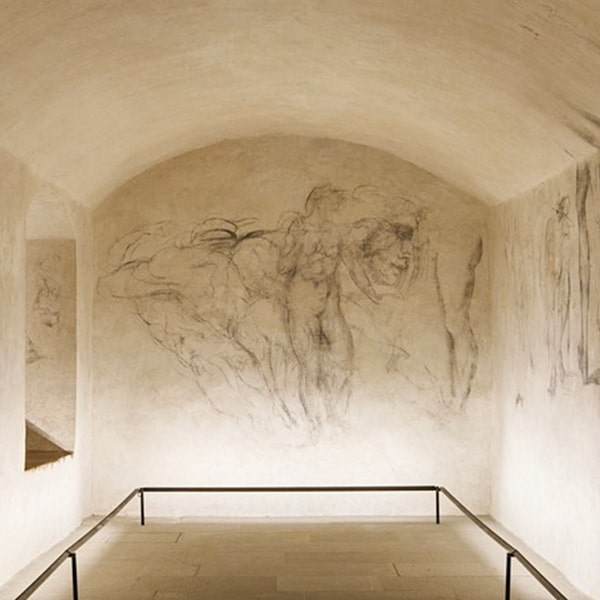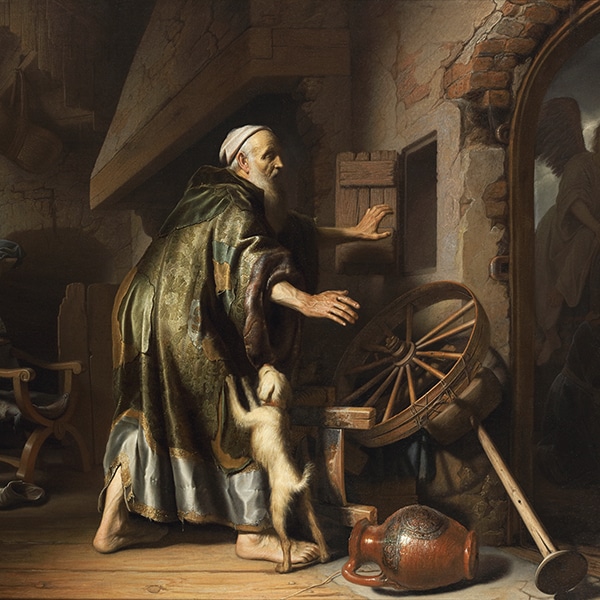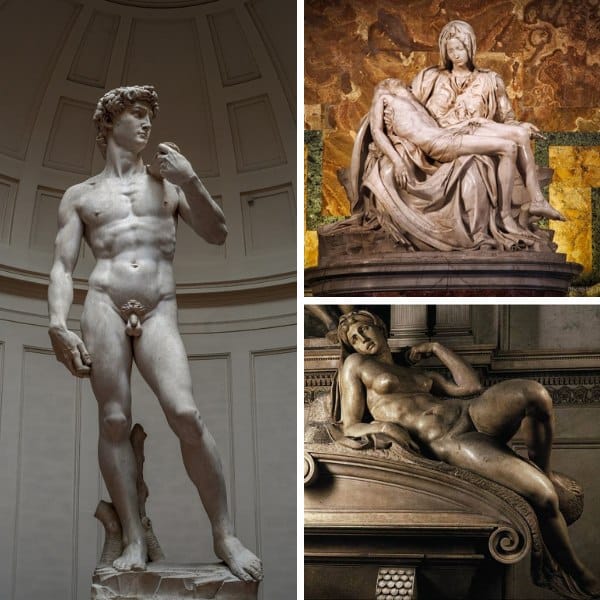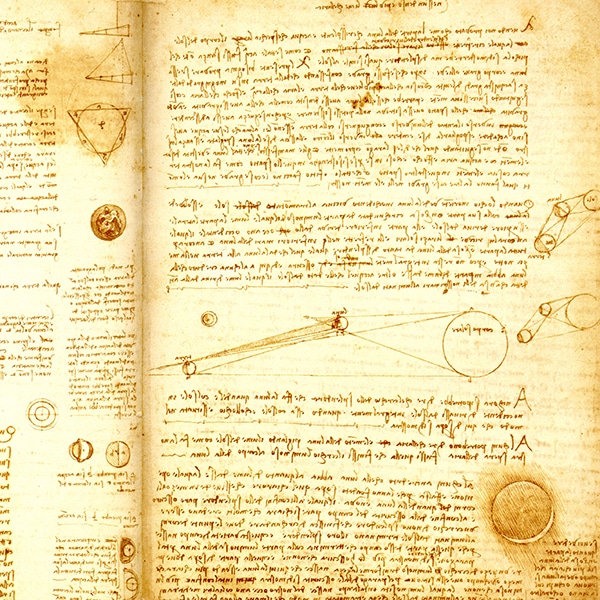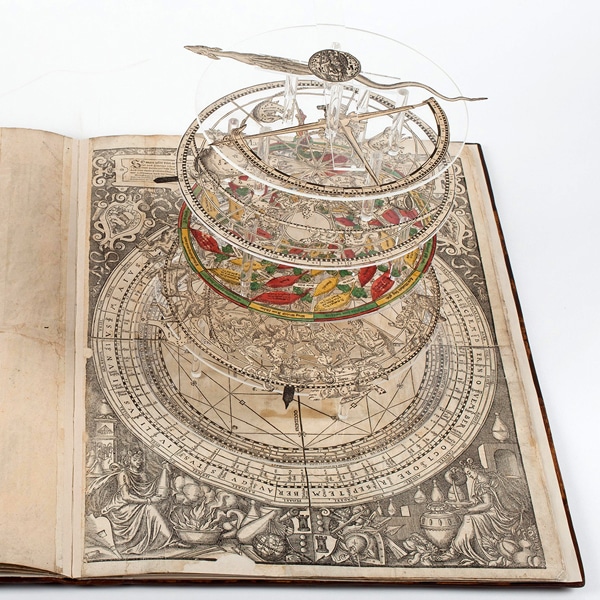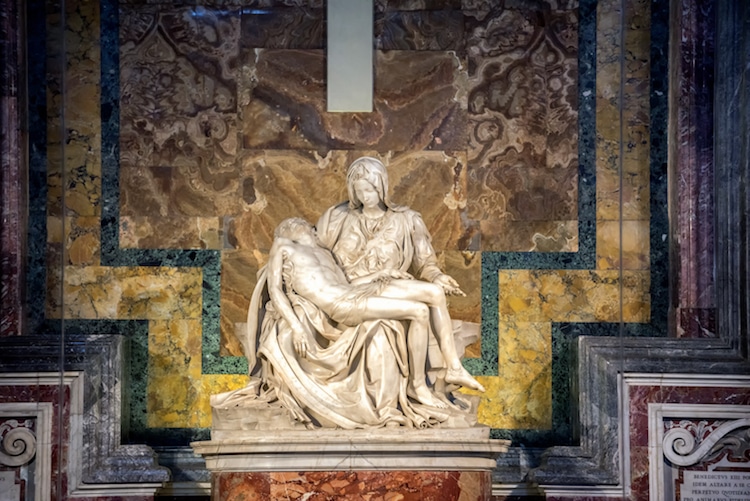
Stock Photos from martinho Smart/Shutterstock
For centuries, the world has been captivated by the groundbreaking art of Michelangelo. Working in multiple mediums, the Italian artist was a true Renaissance man, culminating in an impressive collection of world-famous works that includes the Sistine Chapel ceiling, an iconic interpretation of David, and the Pietà, a monumental marble sculpture of the Madonna cradling Christ.
Crafted in the late 15th century, the Pietà remains one of the most beloved sculptures in the world. Here, we take a look at this piece in order to understand how its iconography, history, and artistic characteristics have shaped such an important legacy.
What is a “Pietà”?
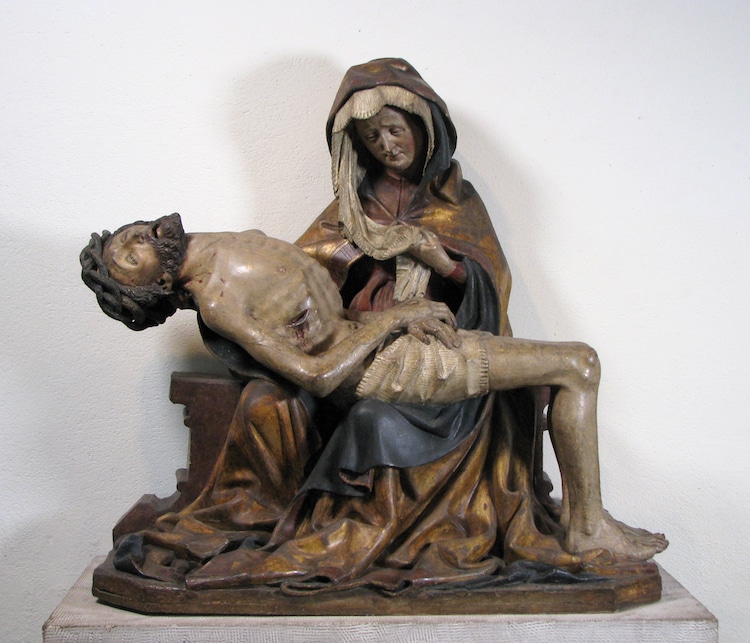
Photo: The Metropolitan Museum of Art Public Domain
In Christian art, a Pietà is any portrayal (particularly, a sculptural depiction) of the Virgin Mary holding the body of her son, Jesus. According to the bible, Jesus was crucified for claiming to be the son of God. Though Mary embracing her dead son is not explicitly mentioned in the holy book, the scene has proven a popular subject among artists for centuries, after German sculptors introduced wooden Vesperbild (a term that translates to “image of the vespers”) figurines to Northern Europe during the Middle Ages.
By 1400, the tradition had reached Italy, where Renaissance artists adapted it as marble sculpture—and Michelangelo made his mark with his unprecedented rendition.
Michelangelo's Pietà
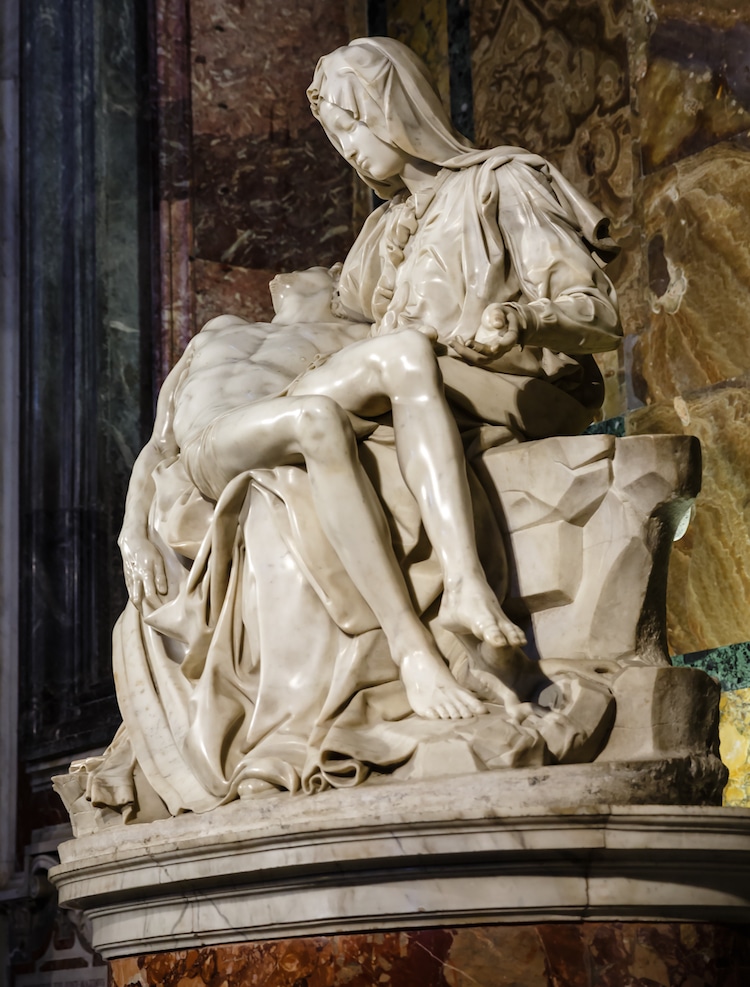
Stock Photos from Drop of Light/Shutterstock
Toward the end of the 15th century, young Florentine artist Michelangelo di Lodovico Buonarroti Simoni was already an esteemed artist. He was particularly renowned for his ability to paint and sculpt biblical figures with realistic anatomical features, culminating in commissions from Rome's religious elite.
In late 1497, Cardinal Jean de Bilhères-Lagraulas, the French ambassador to the Holy See, asked Michelangelo to preemptively craft a large-scale Pietà for his tomb. The following year, Michelangelo began working on the sculpture, which he carved from a single block of Carrara marble, a material derived from Tuscany. Historically used by ancient Roman builders, this medium was prized for its quality and popular among Renaissance artists.
When the piece was completed in 1499, it was overwhelmingly met with praise, with contemporary painter, architect, writer, historian, and Michelangelo biographer Giorgio Vasari among its most faithful fans. “It is certainly a miracle that a formless block of stone could ever have been reduced to a perfection that nature is scarcely able to create in the flesh,” he chronicled in The Lives of the Artists.
In fact, the piece was so celebrated that, fearing he wouldn't be given credit, Michelangelo—who is known for never signing his work—famously inscribed it with his name. According to Vasari, the artist overheard onlookers erroneously attribute the piece to Il Gobbo, a Milanese artist. In response, Michelangelo “stood silent, but thought it something strange that his labors should be attributed to another; and one night he shut himself in there, and, having brought a little light and his chisels, carved his name upon it.”
A Renaissance Masterpiece
What makes Michelangelo's Pietà so special? Like other works by the artist, the piece illustrates Renaissance ideals; in particular, it showcases an interest in naturalism.
During the High Renaissance (1490-1527), artists in Italy began to reject the unrealistic forms found in figurative Medieval art in favor of a more naturalistic approach. At the forefront of this trend, Michelangelo crafted sculptures that focused on balance, detail, and a lifelike yet idealized approach to the human form.
The Pietà perfectly reflects these Renaissance ideals. In order to suggest balance, he rendered the sculpture as a pyramid. Popular in Renaissance painting and sculpture alike, the use of pyramidal composition—an artistic technique of placing a scene or subject within an imaginary triangle—aids the viewer as they observe a work of art by leading their eye around the composition. Such a silhouette also suggests stability, which Michelangelo further implied through the use of heavy drapery covering Mary's monumental form.
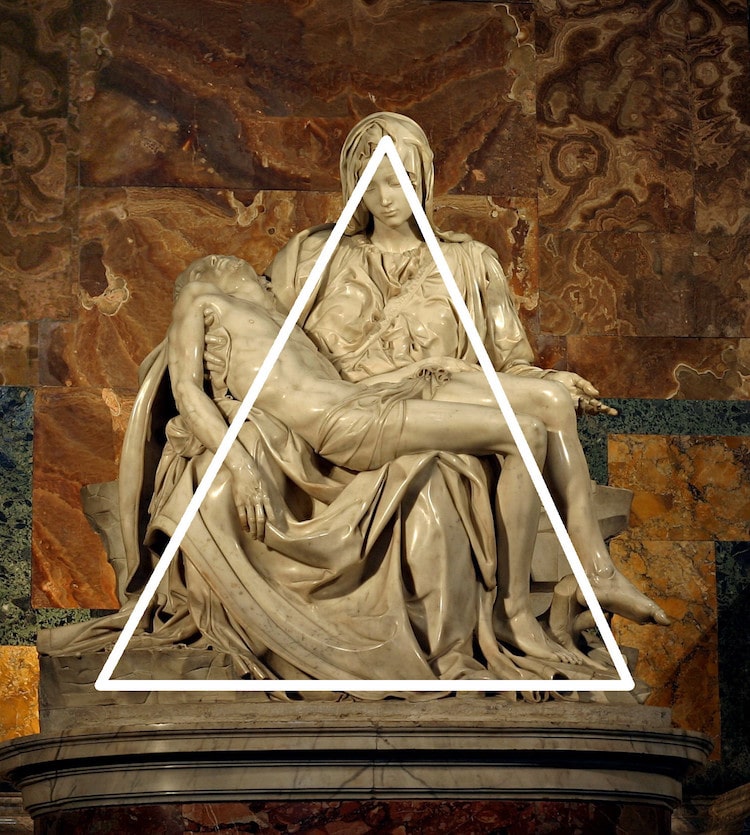
Photo: Wikimedia Commons CC BY-SA 3.0
While, in this sense, the Virgin's large size lends itself to the sculpture's naturalism, it paradoxically also appears unrealistic, as she appears much larger than her adult son. Why did Michelangelo opt for these proportions? While most art historians believe it was a matter of perspective (a massive figure sprawled across a smaller figure's lap would look unbalanced), there exists another, more poignant theory that can be traced back to the Vesperbild tradition.
While discussing a late 14th-century figurine, the Metropolitan Museum of Art explains that Jesus' “small scale may reflect the writings of German mystics, who believed that the Virgin, in the agony of her grief, imagined she was holding Christ as a baby once again in her arms.”
Legacy
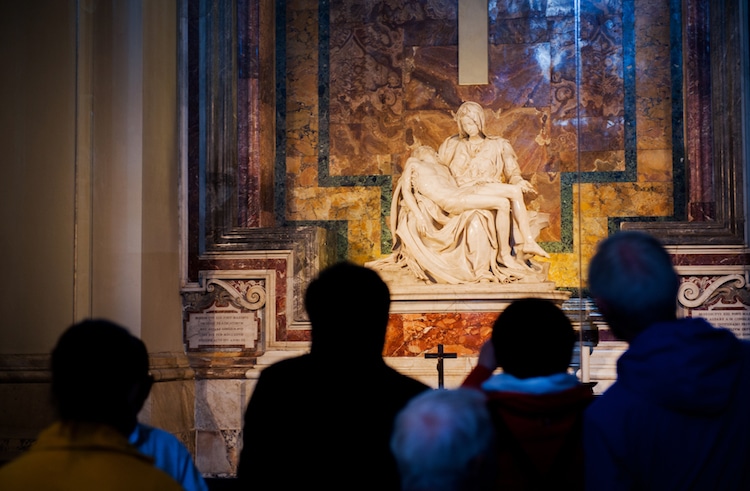
Stock Photos from Elena Pominova/Shutterstock
Since its 15th-century unveiling, the Pietà has had an eventful life. While, for centuries, it was housed in the cardinal's Vatican City-based funerary chapel, it eventually found a permanent and prominent place in St. Peter's Basilica, where it remains today.
Though the piece boasts a 520-year history, many highlights of its legacy have emerged only recently. In the middle of the 20th century, for example, it saw much fanfare when it was displayed at the 1964 New York World's Fair. Less than a decade later, it attracted attention when a man brandishing a hammer vandalized it. And, as recently as early 2019, the piece yet again made headlines when historians concluded that a small terra cotta statue discovered in Paris likely served as its study.
Even without these recent developments, however, the Pietà has undoubtedly solidified its role as one of the world's most significant sculptures.
Related Articles:
A Detailed Look at Bernini’s Most Dramatically Lifelike Marble Sculpture
This Armless Sculpture Is One of the Louvre’s Most Treasured Masterpieces


















































































